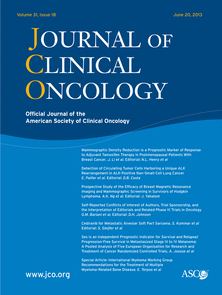
Denosumab noninferior to zoledronic acid in the treatment of bone metastasis

Denosumab noninferior to zoledronic acid in the treatment of bone metastasis
Randomized, double-blind study of denosumab versus zoledronic acid in the treatment of bone metastases in patients with advanced cancer (excluding breast and prostate cancer) or multiple myeloma
J Clin Oncol. 2011 Mar 20;29(9):1125-32. doi: 10.1200/JCO.2010.31.3304. Epub 2011 Feb 22Synopsis
1,779 patients with solid tumours (except breast and prostate) or myeloma, as well as at least 1 bone metastasis or osteolytic lesion as confirmed by radiographic imaging were randomized to receive either monthly subcutaneous injections of denosumab or intravenous administration of zoledronic acid to compare the efficacy and safety of these two treatments. Results at 34 months indicated that denos...
To view the full content, login to your account,
or start your 30-day FREE Trial today.
FREE TRIAL
LOGIN
Forgot Password?
Explore some of our unlocked ACE Reports below!

Learn about our AI Driven
High Impact Search Feature
Our AI driven High Impact metric calculates the impact an article will have by considering both the publishing journal and the content of the article itself. Built using the latest advances in natural language processing, OE High Impact predicts an article’s future number of citations better than impact factor alone.
Continue



 LOGIN
LOGIN

Join the Conversation
Please Login or Join to leave comments.